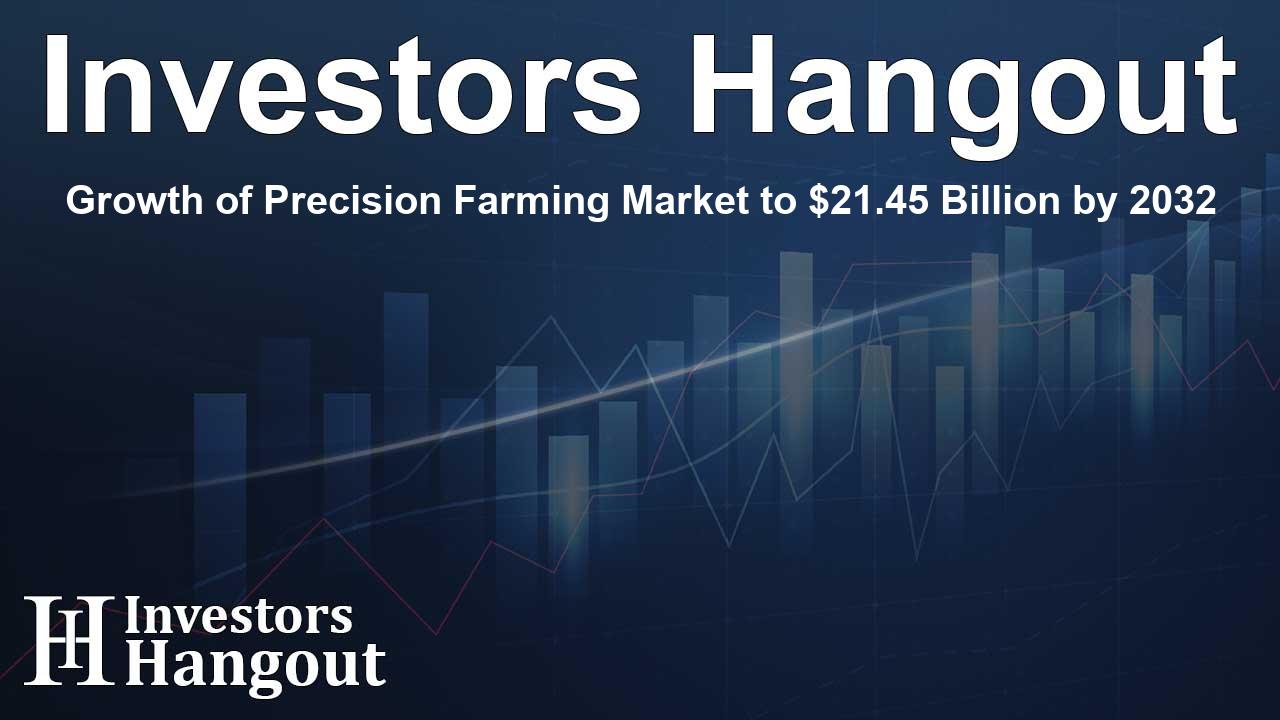Growth of Precision Farming Market to $21.45 Billion by 2032

Future Trends in Precision Farming
The precision farming market is poised for substantial growth, projected to leap from USD 11.38 billion to an impressive USD 21.45 billion by the year 2032. This remarkable growth trajectory mirrors an anticipated compound annual growth rate (CAGR) of 9.5%. The driving forces behind this expansion include escalating global food demand, the pressing impacts of climate change, and an overarching need for sustainable agricultural practices.
Technological Integration in Agriculture
Technological advancements are at the heart of this transformation. The merging of cutting-edge technologies such as the Internet of Things (IoT), artificial intelligence (AI), and blockchain is significantly elevating farm productivity. These technologies enable real-time data collection, facilitate predictive analytics, and create transparent supply chains. Farmers enjoy numerous applications, including yield monitoring, livestock tracking, and variable rate application, all of which rely on precise data for effective decision-making.
Urban vs. Rural Adoption
While developed urban areas quickly adopt innovative technologies due to their robust infrastructure, rural regions often grapple with connectivity issues, hindering their access to these advancements. However, the enhancement of digital infrastructures along with supportive government initiatives is progressively addressing these challenges. As connectivity continues to improve, a broader swath of the agricultural community stands to benefit from these innovations.
Automation and Control Systems
Within the precision farming domain, the automation and control systems segment is anticipated to hold the most significant market share in the near future. These systems encompass essential tools such as GPS receivers, sensors, and guidance technologies that allow for real-time monitoring of agricultural practices. Their implementation aids in reducing labor dependency while optimizing the application of resources, making them indispensable to modern farming.
Weather Tracking Innovations
The weather tracking and forecasting application segment is expected to register the highest growth rate during the upcoming years. The increasing prevalence of smartphones has spurred demand for accurate hyperlocal weather forecasts. As climate change propels extreme weather occurrences, the integration of AI and IoT optimizes forecasting precision, catering not only to agriculture but also to sectors like transportation and emergency management.
Market Expansion in Asia Pacific
The Asia Pacific region is projected to experience the most significant growth within the precision farming market. Rapid modernization in agriculture along with the uptake of advanced technologies such as AI, IoT, and drones is set to enhance crop yields across various countries, particularly in densely populated regions. Driven by a rising population and surging demand for food, nations are investing heavily in smart farming solutions, promoting sustainable practices to mitigate environmental impacts.
Key Challenges and Opportunities
Despite the promising growth outlook, the precision farming market faces challenges, particularly the absence of standardized policies and regulations across different regions. Nevertheless, significant opportunities exist, especially in the variable rate application (VRA) segment. This approach represents a tremendous growth potential, enabling farmers to apply inputs like fertilizers efficiently by tailoring them to actual crop needs.
Conclusion
The story of precision farming is not just one of technology and market expansion; it is about meeting the increasingly complex needs of a world striving for sustainability. Major players in this sector are well-positioned to lead the way, leveraging innovative solutions to overcome challenges while reaping the benefits of an evolving agricultural landscape.
Frequently Asked Questions
What is the expected growth rate of the precision farming market?
The precision farming market is expected to grow at a CAGR of 9.5% from USD 11.38 billion to USD 21.45 billion by 2032.
Which technologies are driving precision farming?
The integration of IoT, AI, and blockchain technologies is significantly enhancing precision farming practices.
How is automation influencing the precision farming sector?
Automation and control systems are optimizing agricultural operations by enabling real-time data analysis and resource management.
What geographic region is leading in precision farming growth?
The Asia Pacific region is predicted to witness the highest growth in precision farming due to modernization and technology adoption.
What are the challenges facing the precision farming market?
Key challenges include a lack of standardized policies and regulations that can hinder growth and implementation.
About The Author
Contact Thomas Cooper privately here. Or send an email with ATTN: Thomas Cooper as the subject to contact@investorshangout.com.
About Investors Hangout
Investors Hangout is a leading online stock forum for financial discussion and learning, offering a wide range of free tools and resources. It draws in traders of all levels, who exchange market knowledge, investigate trading tactics, and keep an eye on industry developments in real time. Featuring financial articles, stock message boards, quotes, charts, company profiles, and live news updates. Through cooperative learning and a wealth of informational resources, it helps users from novices creating their first portfolios to experts honing their techniques. Join Investors Hangout today: https://investorshangout.com/
The content of this article is based on factual, publicly available information and does not represent legal, financial, or investment advice. Investors Hangout does not offer financial advice, and the author is not a licensed financial advisor. Consult a qualified advisor before making any financial or investment decisions based on this article. This article should not be considered advice to purchase, sell, or hold any securities or other investments. If any of the material provided here is inaccurate, please contact us for corrections.
